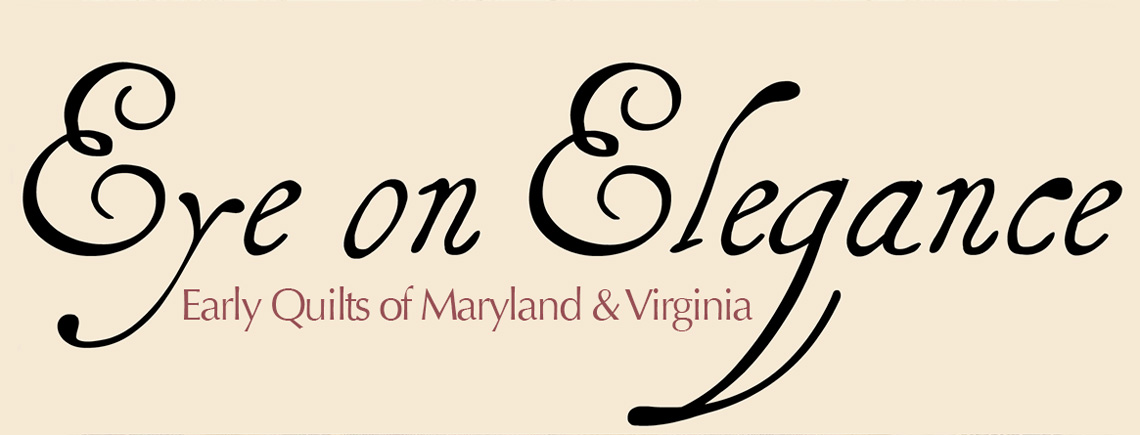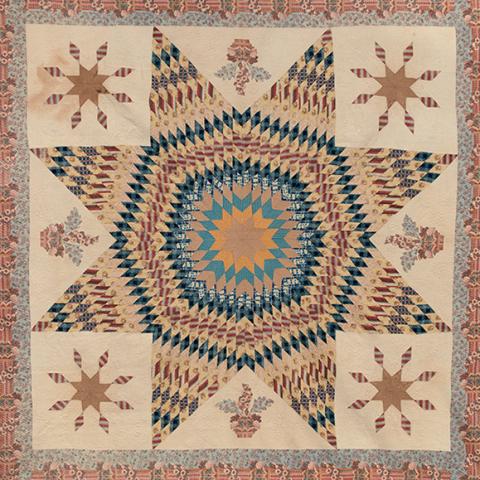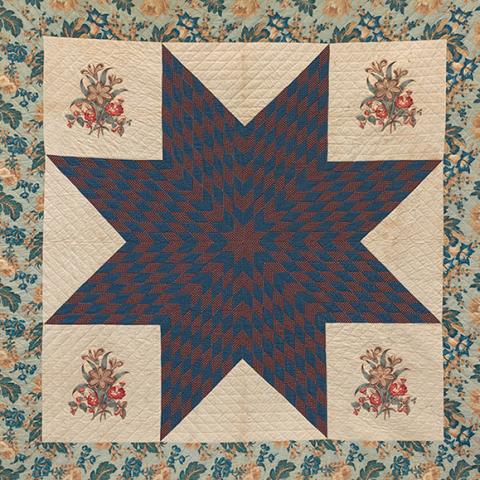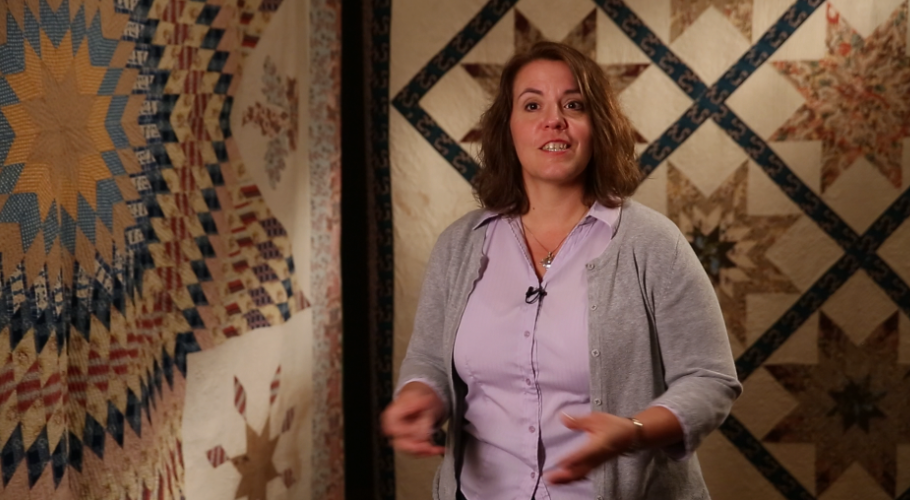Eye on Elegance
These Maryland and Virginia women used the finest fabrics...
Their family members, friends, and servants stitched with them...
They took their regional designs as they moved to new areas...
Meet the quiltmakers who had an Eye on Elegance.
In Eye on Elegance, the DAR Museum uses its extraordinarily rich holdings of Maryland and Virginia quilts to examine regional styles prior to 1860. Styles particularly popular in Maryland and Virginia are displayed side by side with quilts whose designs were popular throughout the Eastern Seaboard. Because we know many of the quiltmakers, we can identify their quilts as Maryland or Virginia examples and explore the makers’ histories, as well as who else in each quilter’s household may have helped stitch. The exhibition is divided into four sections: the Appliqué section presents quilts and counterpanes of chintz appliqué, or with appliqué centers; the Pieced section features Mathematical Stars, Strippies and other designs; Baltimore and Maryland Albums claim their own section; and the Migration section examines quilting designs moving between continents and to other regions of the United States.
Eye on Elegance examines regional designs of early Maryland and Virginia quilts. The exhibition includes designs popular outside the region, and explores how designs migrated with their makers. European quilt and patchwork traditions came to America, and American-born quilters moving West brought their designs to influence quilting in new territories. Knowing the identity of almost all the quiltmakers, Eye on Elegance delves into their histories, and looks at family members and servants (free and enslaved) living in the household who might have helped with each quilt, as quilting was often a communal activity. The quilts display elegance and skill, disproving the myth that quilting arose from poverty and necessity. These quiltmakers had leisure time, sewing for pleasure, to show their refinement, and their eye for elegance.
Eye on Elegance examines regional designs of early Maryland and Virginia quilts. The exhibition includes designs popular outside the region, and explores how designs migrated with their makers. European quilt and patchwork traditions came to America, and American-born quilters moving West brought their designs to influence quilting in new territories. Knowing the identity of almost all the quiltmakers, Eye on Elegance delves into their histories, and looks at family members and servants (free and enslaved) living in the household who might have helped with each quilt, as quilting was often a communal activity. The quilts display elegance and skill, disproving the myth that quilting arose from poverty and necessity. These quiltmakers had leisure time, sewing for pleasure, to show their refinement, and their eye for elegance.








